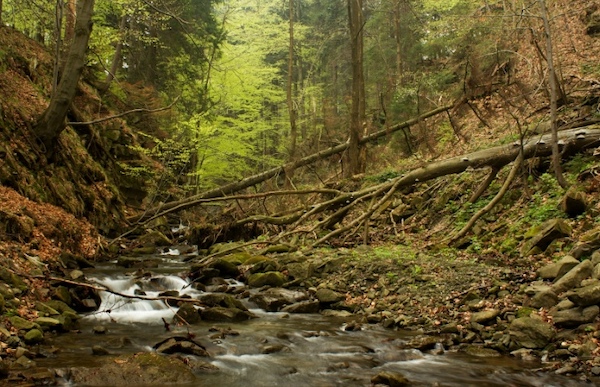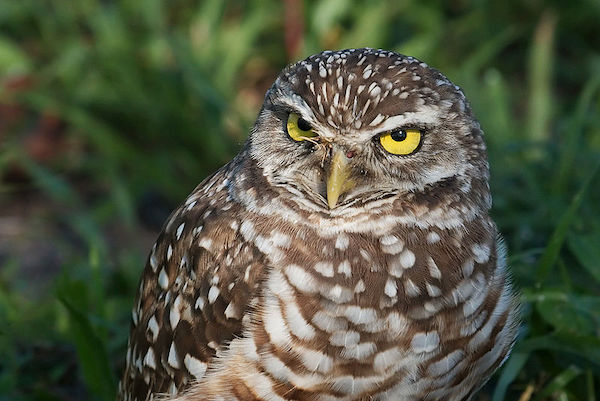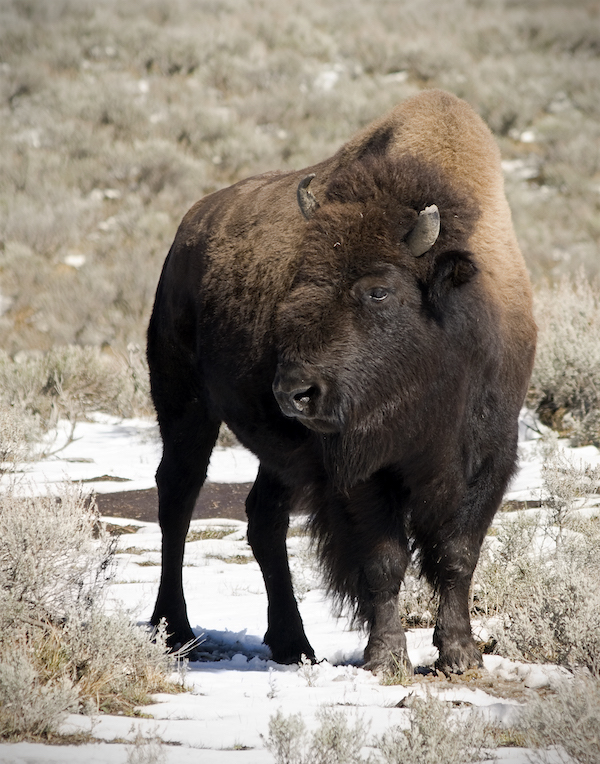Alina C. Fisher and Tanya Samman, Environmental & Earth Sciences co-editors
When you stand on a busy street corner waiting for the light to turn so you can cross, do you ever feel overwhelmed by the concrete jungle around you? Can you imagine what it looked like before the high-rises, telephone poles, and billboards took over the landscape? The human footprint in cities is profound, often completely replacing natural environments.

And we also have impacts outside of cities, often in ways that go far beyond what’s visible. When we punch a road or seismic line through a forest, wolves can travel more quickly, making them more effective predators. Resource extraction can benefit some species while being detrimental to others, which can completely unbalance entire wildlife communities. Even selectively reducing the number of ground squirrels in agricultural landscapes can result in drastic population declines in the now-endangered burrowing owl and black footed ferret.
Realizing the detrimental effects our activities have on so many other species and ecosystems, conservation biology has turned to rewilding in an attempt to repair the damage we’ve done.

Along came rewilding
Rewilding is a hot topic these days in conservation circles. It can mean both protecting and restoring natural ecological processes – increasing connectivity, restoring habitats, and reintroducing (or supplementing the numbers of) keystone species.
A successful example of a rewilding project is the wolves of Yellowstone, which resulted in an increase in the number of wolves, and a decrease in the overabundant deer population. The change in deer distribution allowed beavers to recolonize naturally (they had disappeared shortly after the wolves were eradicated in the 1920s), which, in turn, provided habitat for waterfowl, muskrats, and river otters. The wolves also decreased the number of coyotes, allowing rabbits and mice to increase, which supported larger populations of hawks, foxes, and badgers. The effects even stabilized the riverbanks by decreasing erosion. The impact of bringing back one species, the wolf, seemingly balanced the whole ecosystem.
Although less glamourous than charismatic wildlife species like wolves, habitat connectivity also matters for conservation and rewilding. In areas that are isolated, species may face survival pressures that can drive them towards extinction. The more intact a landscape is, the more likely species will persist on it. When habitat patches are connected, species can move back and forth between patches as needed for feeding, mating, or denning. And that’s why wildlife bridges, and corridors of connected habitat can be effective tools for conserving species – conserving space matters too.
The question of when?
One additional consideration for rewilding projects is the concept of when. What ecological community do we want to (re)establish with rewilding? Do we aim for the community that existed before a species was lost from the landscape – like the wolves in Yellowstone? Should we aim for the time before Europeans reached North America – when Canadian landscapes had a minimal human footprint? Or should we aim even farther back to when there were so few humans that they had no impact on the environment at all – targeting back to the prehistoric abundance of Pleistocene rewilding?
J.B. MacKinnon suggests that generational amnesia has produced shifting perceptions of what natural abundance and communities look like – whatever we grow up with is what we assume is a natural state so we don’t realize just how much species diversity and abundance has already been lost. This complicates our ability to decide what a successful conservation target actually is.
Success or unexpected outcomes

Rewilding may not be straightforward, but it can certainly be effective. Take, for example, the reintroduction of the American bison to the Great Plains after being eradicated in the mid-1800s. Another example is the reintroduction of the sea otter to the North Pacific coast. Initially driven to local extinction due to fur harvesting, in the early 1970s otters were reintroduced to the northern tip of Vancouver Island. In the intervening years, the otters have re-established themselves and spread southwards along the western coast of the island. Along with the expansion of the otters’ range, there has been a reduction in urchin barrens and an increase in kelp forests, as well as many marine species that rely on kelp forests for crucial habitat. Certainly a rewilding success story!
But rewilding can also have inconsistent or unpredictable results, and so it may not be the answer to all conservation problems.
Can we really go back?
Thanks to climate change, it may not even be realistic to aim for the ecosystems of the past – it’s possible that conditions are no longer suitable for those targets. In the case of extinction, rewilding may use similar species to fill the ecological role of an extinct species. But can these species be substituted like members of a hockey team, or do they have unintended ecological consequences like contributing to the spread of invasive species?
At times, rewilding can be very expensive with a low chance of success. Take the case of the Ontario caribou moved to a Lake Superior island to protect them from predators. It is probably just a matter of time before wolves find their way onto the island during the winter when the lake is frozen.
And climate change, cost, and logistical challenges aren’t the only threats to successful rewilding. Public attitudes towards coexistence with wildlife can be wildly divergent, so the support for conservation or rewilding initiatives may be contentious when human livelihoods are impacted. When the Yellowstone wolves move beyond the park’s boundaries, they risk being shot by trophy hunters or ranchers who claim the animals pose a threat to their herds. And last year, a male bison, part of the herd reintroduced into Banff National Park, was killed after he left the park because he was thought to be a risk to public safety and to the safety of local livestock.
So, where do we go from here?
In the past, most rewilding programs reintroduced a single species (wolves in Yellowstone, sea otters on Vancouver Island) but available evidence suggests that rewilding is more effective when we get away from this approach and focus on more complex ecosystems or multi-species interactions. For example, in Newfoundland, the focus was on recovering muskrat populations before their predator, mink, but other work is showing that recovery of both predators and prey simultaneously is both quicker and more stable than recovery of each species in sequence.
Recent technologies have even put de-extinction on the table. Perhaps someday soon mammoths will roam the grasslands of North America, once again fulfilling their ecological role. But the question is not so much ‘can we?’ as ‘should we?’
Whatever it holds, it looks like the future of rewilding may be even more complex and promising than it is today.
~30~



